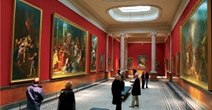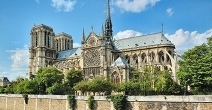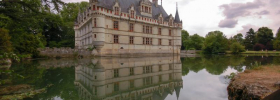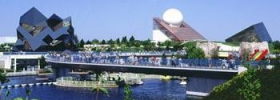 Home
Home- > Tours
- > Midi-Pyrénées
- > Lot
- > Gourdon
- > Welcome to gourdon (lot)
Welcome to gourdon (lot)
| Topic | Sciences and discovery |
| Departure | GOURDON (46) |
| Details | Gourdon in Quercy is located in the North-West of the department of the Lot and the Midi-Pyrenees area. The current village of Gourdon is built on a remarkable hill acropolis which dominates the surrounding country, Bouriane, more than twenty kilometers to the round. It carried the keep or C-minium of one of the most powerful feudal families of Haut-Quercy, Fortaniers de Gourdon. |
Gourdon Medieval Town
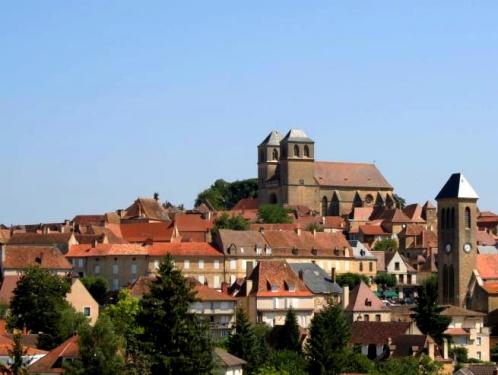
Since the oldiest time Gourdon has been inhabited by human being. The prehistoric caves of Cougnac are witnessing the paleolithic wall painting art.
Overlooking the ups and downs of the Bouriane area Gourdon was first a fortress on the top of a hill culminated at 284 metre high.
The castle built there was distroyed under the king Louis XIII th. The present Boulevards are remembering the shape of the former citywalls razed down in the XVIIIth century.
At the medieval time Gourdon was protected by its ramparts. During the XIV th century,the town had a great strengh. About 5000 inhabitants ( as many as the present population) gathered in the old town centre.
At the time of that 100 years war the fortress protected the Quercy area faithfull to the king of France from the King of England suzerains in the neighbouring Périgord.
The local legend has it that Bertrand de Gourdon Lord of Gourdon killed the famous Richard Lion’s Heart.
Gourdon as a market town grew up thanks to its Charter, .giving the guild men more power for trading .The town center remember the medieval past : rue du Majou ( meaning main street ) has preserved its fortified gate .Workshops, shops, haftimbered houses are showing off the wealth of the town at the medieval time.
The Maison du Senechal is a local masterpiece of the Renaissance architecture ( the seneschal was the king’s representative). Walking in the swirling and narrow streets like « Zig Zag street » « Twist street », « deaf street », you can imagine easily the former every day live.
Saint Pierre church one of the greatest testimony of the catholic faith will celebrate this year its 700 years anniversary . This fortified church had been damaged during the war of religion. The wooden panel inside were performed by the famous local sculptors Tournier.
Other places and monuments in Gourdon are also remembering the past. Like later at the french revolution time for example Jean Baptiste Cavaignac’s birthplace ( he was one of the deputee who voted King Louis the XVIth ‘s death). his house behind the church is decorated with a marvelous engraved wooden door of the XVIIIth century.
Out of the walls the Cordeliers church was the former franciscans monastery chapel.It shelters a XIV th century old baptisum fount.The buildings standing nearby were the former dormitory and refectory .
Further stands Saint Siméon Church : the former hospital’s oratory. It possess a master piece of baroque art : a pulpit chair performed by Tournier.
On the countryside, in the heart of the picturesque Bléou stream valley stands a water mill facing Notre Dame des Neiges Chapel . This ancient pilgrimage chapel has been rebuilt in the XVII th century and decorated by the local sculptors Tournier (wooden altar piece).
Accommodation nearby
Discover Cougnac caves
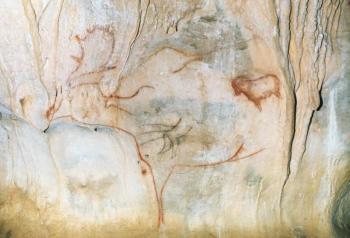
At the Upper paléolithic (Between 25000 & 14000 years ago), the Cro-Magnon men have performed the paintings on the wall : reindeer, ibex, mammoth,stag, human being figures, various signs.
You will discover the oldiest authentified animal paintings to be seen open to the public.
Accommodation nearby
The church Saint-Pierre
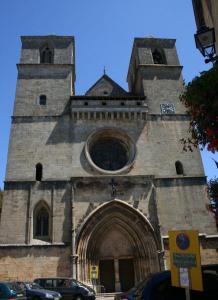
The Saint-Pierre church was built of 1304 to 1510 on the basis of an old Romance church ruined at the end of XIIIrd century, it dominates the hillock and the town of Gourdon. Its stripped characters attach it to the Languedocien Gothic school. Its southern nave and its tower were completed by the medieval architect Jean Deschamps. Length of the nave: 41 m, width: 11,60 m, height of the vault: 21 m, height of the turns: 35 m.
Seriously degraded on September 4, 1562 at the time of the invasion of the Protestant troops of the captain Lasted, the Saint-Pierre church was restored as from 1608. In 1987, the Saint-Pierre church found his organ arranged in 1887 by the Stolz brothers in a beautiful dresser baroque in oak.
It nowadays presents a flourishing interior decoration left by the time baroque then by the Restoration:
- Large panels of polychrome gilded wood carried out by the Sculptors Tournié (1669), devoted to the life of Jesus-Christ and the Virgin Mary.
- Antependium (school of the Tournié Sculptors, end XVIIth century) representing the priesthood of Melchisédek.
- Way of Cross in traditional sculpture in the round of style.
- Furnace bridge of the Blessed Sacrament decorated by the painter Barbieri (1833) and restored in 2005-2006.
- Pulpit to preach the time Restoration.
Accommodation nearby
Latest news on : Welcome to Gourdon (Lot)
Tourism near
 Visit the city of Gourdon
Visit the city of Gourdon - 3 Monuments
Tours
 Discover la haute Bouriane
Discover la haute Bouriane
 Saint-Germain-du-Bel-Air
Saint-Germain-du-Bel-Air






















